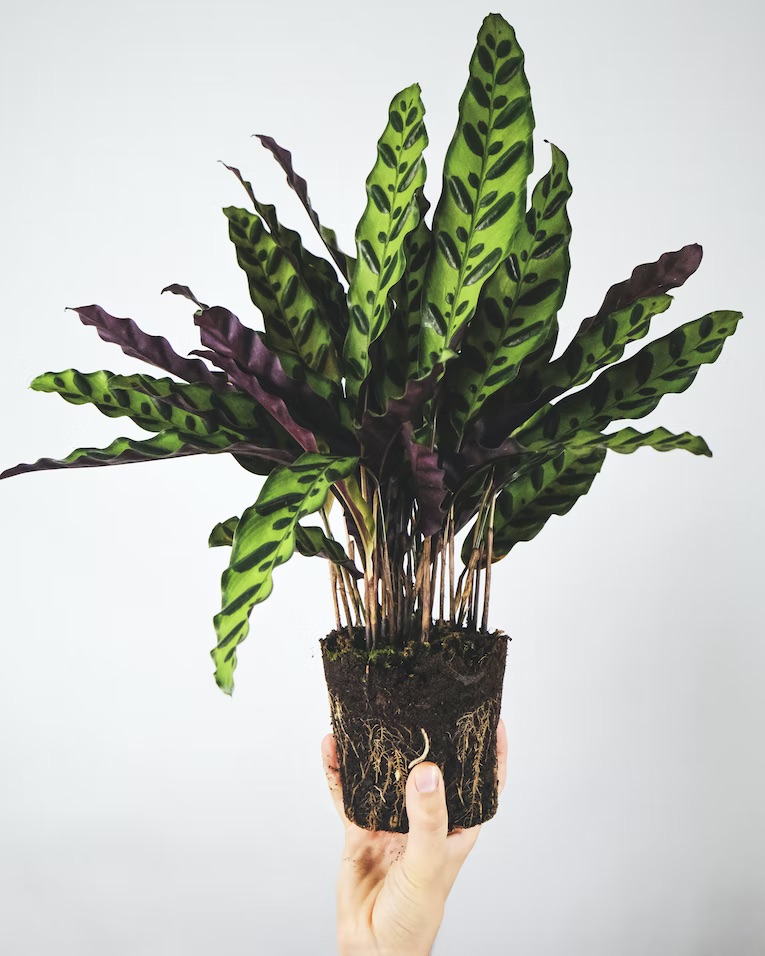Calathea lancifolia, commonly known as the Rattlesnake Plant, is a stunning plant with long, lance-shaped leaves that are marked with wavy, dark green lines. This popular houseplant is native to the tropical rainforests of South America, where it can be found growing on the forest floor.
With its striking appearance and easy care requirements, it’s no wonder that Calathea lancifolia has become a popular addition to homes and offices around the world. In this article, we’ll take a closer look at this beautiful plant, including its origins, care requirements, and tips for keeping it healthy and thriving.
Table of Contents
Origins of Calathea lancifolia
As mentioned earlier, Calathea lancifolia is native to the tropical rainforests of South America, where it grows in the understory of the forest floor. Specifically, it is found in countries such as Brazil, Colombia, and Venezuela. In its natural habitat, the Rattlesnake Plant grows in moist soil and enjoys a humid environment. It thrives in partial to full shade and is often found growing alongside other tropical plants, such as ferns and palms.
Interestingly, Calathea lancifolia is not just known for its striking appearance, but also for its unique behavior. Like many Calathea species, the Rattlesnake Plant is a “prayer plant,” meaning its leaves will move up and down throughout the day as it adjusts to changes in light and temperature.
Care requirements for Calathea lancifolia
When it comes to caring for Calathea lancifolia, there are a few key things to keep in mind. Here’s what you need to know:
Light
As a tropical plant, Calathea lancifolia prefers bright, indirect light. Direct sunlight can scorch its leaves, so it’s best to place it in a spot that receives filtered light or to keep it a few feet away from a south-facing window.
Water
Like many tropical plants, Calathea lancifolia enjoys moist soil. However, it’s important not to overwater it, as this can lead to root rot. Water the plant when the top inch (2.5 centimetres) of soil feels dry to the touch, and be sure to use a well-draining potting mix.
Humidity
As mentioned earlier, Calathea lancifolia enjoys a humid environment. You can increase the humidity around the plant by misting it regularly, placing a tray of water nearby, or using a humidifier.
Temperature
Calathea lancifolia prefers temperatures between 65 and 80 degrees Fahrenheit. Avoid placing it near drafts or air conditioning vents, as this can cause its leaves to dry out.
Fertiliser
To keep your Rattlesnake Plant healthy and thriving, you can fertilise it once a month during the growing season (spring and summer). Use a balanced, water-soluble fertiliser and dilute it to half strength.
Propagation
If you want to propagate your Calathea lancifolia, you can do so by dividing the plant during repotting. Gently separate the roots and replant each section in a separate pot.
Tips for keeping Calathea lancifolia healthy
In addition to the care requirements listed above, there are a few other things you can do to keep your Calathea lancifolia healthy and thriving:
Clean the leaves regularly
Dust can build up on the leaves of your Rattlesnake Plant, which can prevent it from photosynthesizing properly. Wipe down the leaves with a damp cloth once a week to keep them clean.
Monitor for pests
Like all houseplants, Calathea lancifolia is susceptible to pests such as spider mites and mealybugs. Keep an eye out for any signs of infestation, such as webbing or small white bugs, and take action immediately if you notice any issues. You can use a natural insecticide or a gentle soap and water solution to get rid of pests.
Provide proper drainage
Calathea lancifolia does not like to sit in water, so it’s important to provide proper drainage in its pot. Make sure there are drainage holes in the bottom of the pot and use a well-draining potting mix to prevent water from accumulating around the roots.
Rotate the plant
To ensure that all parts of your Rattlesnake Plant receive adequate light, rotate the plant every few weeks. This will prevent one side of the plant from getting too much or too little light, which can cause the leaves to become discolored or damaged.
Avoid drafts
Calathea lancifolia is sensitive to temperature changes and drafts, so it’s important to keep it away from air conditioning vents, doors, and windows. If you need to move the plant, do so slowly and avoid exposing it to extreme temperatures or air currents.
Provide a humid environment
As mentioned earlier, Calathea lancifolia prefers a humid environment. You can increase the humidity around the plant by misting it regularly, placing a tray of water nearby, or using a humidifier. This will help prevent the leaves from becoming dry and crispy.
Prune the plant
If your Rattlesnake Plant starts to become too leggy or overgrown, you can prune it back to encourage new growth. Use sharp, clean scissors to remove any yellow or damaged leaves, as well as any stems that are no longer producing leaves.
Conclusion
The Calathea lancifolia is a beautiful and easy-to-care-for plant that can add a touch of tropical elegance to any home or office. By following these tips for care and maintenance, you can keep your Rattlesnake Plant healthy and thriving for years to come.


